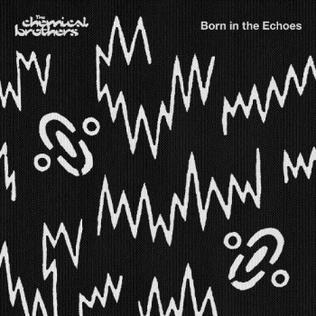"The future? I’ll see you there!" These
words come in the middle of the latest album from London dance music
survivors the Chemical Brothers. It could be a sly nod to their
influence on this decade’s global electronic boom. Back in the
mid-1990s, acts like the Chems, Fatboy Slim, and the Prodigy
were primed to vanquish guitar rock once and for all while ushering in a
squelching age of rave. It didn’t work out that way and, soon enough,
Limp Bizkit were dragging their knuckles all the way to the top of the
charts. Tom Rowlands and Ed Simons’ radical mix of acid house, hip-hop,
and shaggy psych was deemed just another pop fad. But now, with EDM
festivals drawing millions of fans around the world and spiritual big
beat descendants like Diplo and Hudson Mohawke
helping to shape the Hot 100, it’s clear that the Chemical Brothers
were both ambassadors and soothsayers. And they’re still around. They
deserve to gloat.
Then again, the line could also suggest something more
sinister. It’s taken from a spoken-word performance by iconoclastic
76-year-old Canadian poet bill bissett,
whose idea of "the future" involves scentless flowers, two-headed
babies, and other marks of a hellish apocalypse; for every hit of
ecstatic futurism, they seem to be saying, there is an equal and
opposite dose of reality. Meanwhile, the music of "I’ll See You There"
finds Rowlands and Simons once again tripping out on the past, as
howled backmasking and frenzied drums criss-cross in an effort to once
again capture the headiness of their own psychedelic pop ur-text, the
Beatles’ "Tomorrow Never Knows". All of which leads us to the eternal
present—the now—which happens to be a place that suits the Chemical Brothers quite well.
Born in the Echoes is the pair’s eighth album and it continues the creative resurgence ignited by their brilliant last full-length, 2010’s Further,
which served as something of a career reset following a decade of
flagging potency. But whereas that album was marked by extended
dancefloor workouts, seamless DJ-style transitions, and an overall
feeling of loved-up euphoria, Echoes is more of a grab bag:
Enormous festival fillers and hard-nosed club bangers rub up against
wondrously bizarre studio experiments and some of the best pure pop
songs Rowlands and Simons have ever made.
Like fellow '90s innovators Daft Punk,
the Chems have managed to last more than 20 years in part because they
are smart enough to prioritize mindless immediacy. The two upper middle
class boys bonded while studying history at Manchester University at the
height of the city’s ecstasy heyday; they would read Chaucer’s bawdy Canterbury Tales and
then head over to The Haçienda and flail about with 1,000 of their new
best friends. They quoted British novelist Evelyn Waugh on an early EP
title and then sampled roughneck New York rapper Keith Murray on their
ageless classic Dig Your Own Hole. Simons recently returned to
the world of academia (and will miss this year’s Chemical Brothers tour
dates because of it), while Rowlands recently summed up
the duo’s objectives thusly: "We're just really into making funny
sounds and putting them into some kind of order that makes sense … Not
every song has to be the meaning of life."
So on Echoes we get Q-Tip spouting motivational pizza box rhymes over rubberband basslines on future sports montage soundtrack "Go" followed by St. Vincent
staring into the suicidal void of a performer’s high on "Under Neon
Lights", which peaks with a guitar (or is it a synth?) solo that
searingly recalls "Bulls on Parade". We get the viscous funk of "Taste
of Honey"—replete with buzzing bee cameo—next to the taut title track,
which features a coolly distant vocal from Cate Le Bon and sounds like a worthy tribute to the late, great psych auteurs Broadcast. Then Beck
shows up at the end to help Rowlands and Simons create the finest New
Order song in ages. "Wide Open" makes the inevitability of losing
it—life, love, inspiration—sound terribly triumphant, and just as the
track hits its climax, Beck wisely gets out of the way, making room for
undulating waveforms that bristle and burst with all-too-human
imperfections.
Talking to Spin about his Big Beat contemporaries
in 1999, Ed Simons suggested, "There’s surely going to come a time when
those kind of tricks—all the drops and builds and rhythm changes—aren’t
going to trigger the same responses in people." Of course, the same
could be said of today’s insta-nuke dance tracks, the ones that try to
cheat death by just running away from it really fast and really hard.
And, to be fair, the Chemical Brothers have deployed plenty of drops and
builds and rhythm changes across the last two decades. But Rowlands and
Simons’ version of the future isn’t one of narrow-minded annihilation;
there are levels to it, along with paths that connect everything from
the Fab Four to "Funky Drummer" to Phuture.
Part of a fast-moving culture always looking for the next high, the
Chemical Brothers remain steadfast—eyeing the past and future while
living in the here and now.
